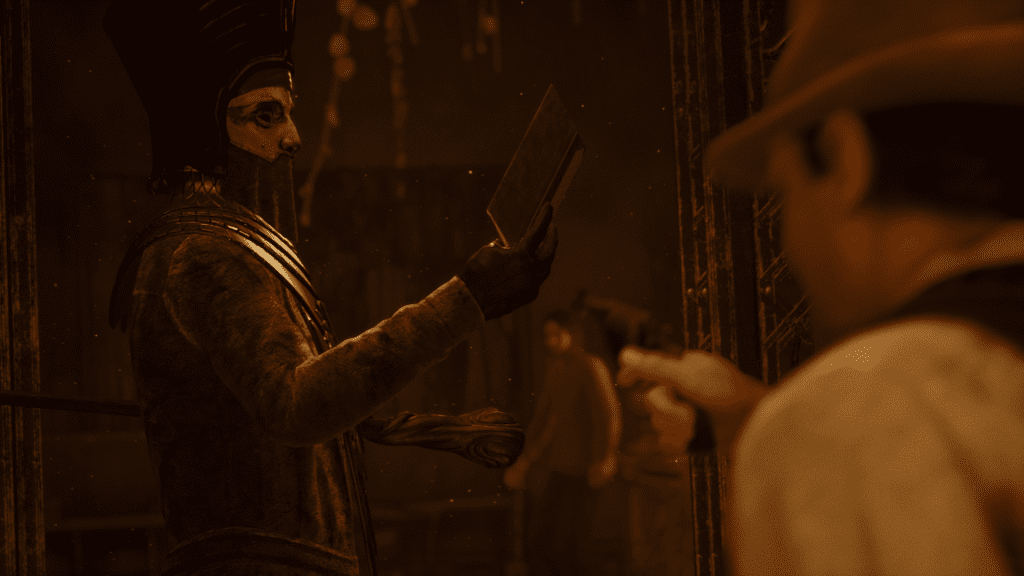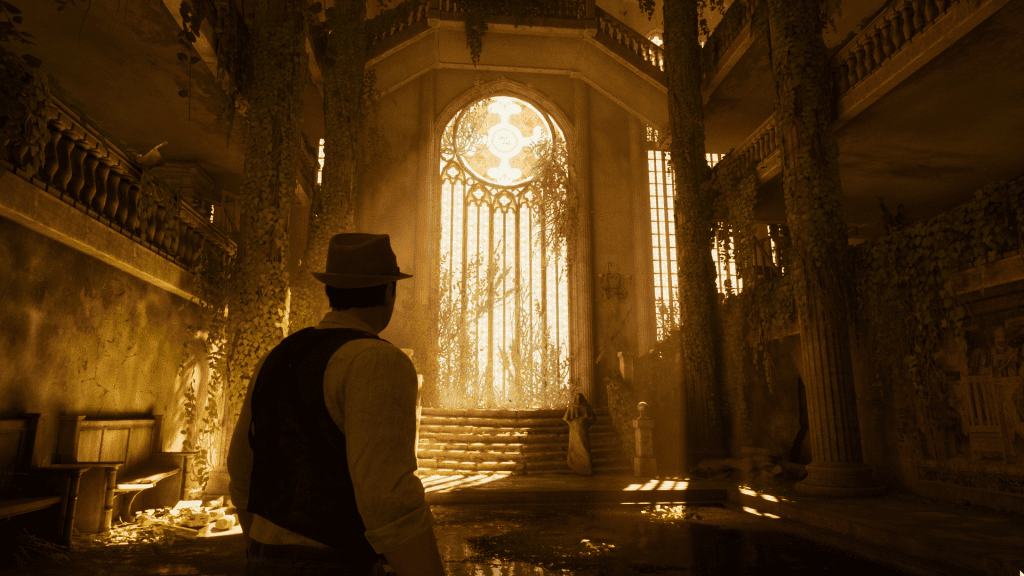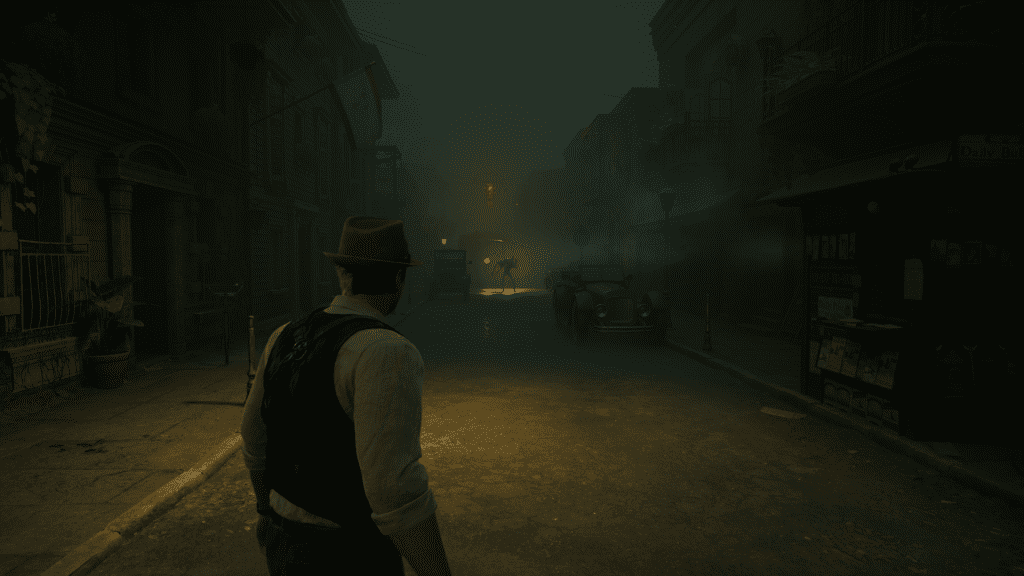At first blush, Alone in the Dark looks like something impressive. It boasts a Hollywood-grade cast featuring the acting talents of David Harbour and Jodie Comer, and on the surface, it seems to fuse an attractive palette with tantalising puzzles that must be solved to unravel a deep and immersive mystery. It’s leaning on a name that many gamers are familiar with, and it’s effectively a reimagination of the original game that was released in 1992.
Unfortunately, Alone in the Dark’s delivery falters somewhat as things unravel over the six to eight hours you’ll dedicate to one of the game’s narratives. There are glaring issues with a few of the game’s core mechanics – such as combat – and the mostly predictable story can get confusing at times, causing the player to lose a sense of what’s going on.
Laying the Foundation

To give credit to Alone in the Dark, the shining gem in the game’s production is David Harbour’s character, Edward Carnby. He’s the recognisable protagonist who has fronted the series for thirty-two years, and Harbour’s command of the character is mostly stellar. He outpaces Comer by some distance, who by comparison seems to have little energy in her acting – which isn’t typical of the versatile and talented performer.
Alone in the Dark unfolds in Decerto Manor, a spooky, winding mansion. There’s a mystery afoot in the 1920s, and our leads, Edward and Emily, must get to the bottom of it. This offers a split perspective mechanic that invites players to go through Alone in the Dark twice – once as each character. The supporting cast is interesting enough, and as the game unravels, players will come face to face with some intriguing personalities, including the game’s enigmatic baddie – The Dark Man.
Following a linear path, players must navigate Decerto Manor and solve a wide variety of puzzles – most of which are fairly obvious. There’s a goal to get to the bottom of the story and locate Emily’s missing uncle, but it quickly becomes apparent that all is not what it seems in Decerto Manor. Edward’s story will see him plummet into a pit of self-discovery, repentance, and confusion, but it’s mostly on the part of the player that confusion arises.
What starts as a simple puzzle-solver becomes something much more twisted as players are forced to fight against a range of bizarre, mutated enemies that appear the most inopportune times. Edward’s story is much more action-packed, with players eventually tooling up with all kinds of weapons to slay out against the relatively unexplained enemy forces.
Hollywood or B-Movie?

In terms of the overall presentation of the game, Alone in the Dark looks great and runs quite well. During my ‘Edward playthrough’ – which lasted just north of six hours – I didn’t experience any bugs or glitches. It was quite smooth throughout, and one of the redeeming factors of Alone in the Dark is that it looks brilliant on the screen. Pieces Interactive has created a solid atmosphere and has built a series of environments that diversify the game greatly, even if they don’t offer much beyond running through them to get to the next puzzle.
If there’s one monumental letdown in Alone in the Dark, it’s the combat. At times, the game’s combat mechanics are borderline prehistoric. Let’s take melee combat as an example. Players can pick up a range of axes, hammers, pipes, and so on, and use them to dash enemies to the ground, but it’s more a case of wildly swinging and hoping something connects. There are molotov cocktails and thrown weapons littered inexplicably around the game, and the combat loop typically involves throwing something at an enemy to stun them and following up with a quick tap-tap from either a revolver, a Tommy gun, or a shotgun.
Even the game’s boss battles are drastically boring – the final fight can be wrapped up in a matter of seconds and offers no real challenge to the player.
It could be argued that Alone in the Dark is more about the puzzles than the action, but even they’re not challenging at all – and often, the answer is staring you in the face. I can’t say that I was ever bored with Alone in the Dark – I finished it in two sittings, after all. I just don’t think there’s enough meat on the bones to satisfy fans of the genre.
Is Alone in the Dark Worth It?

Alone in the Dark looks great on the surface and has some solid acting from big-name performers, but the core of the game revolves around puzzles that are far too easy to solve. There’s an interesting enough story at the heart of Alone in the Dark, but it’s too predictable and quickly becomes confusing and at times bizarre, with the narrative crisscrossing inexplicably. There are glaring issues with the game’s combat mechanics, and every fight unfolds the same way – it almost feels as though combat is an afterthought.
With all that being said, I enjoyed Alone in the Dark just enough from Edward’s perspective and plan to go through the game again as Jodie Comer’s character to see if any more depth is added. I don’t feel I can reliably advocate for buying Alone in the Dark at full price, though. It’s not terrible, but there’s just something lacking that doesn’t allow the player to experience satisfaction at any point throughout the story.
Giving it a number, I’d score Alone in the Dark at 6.8/10.










